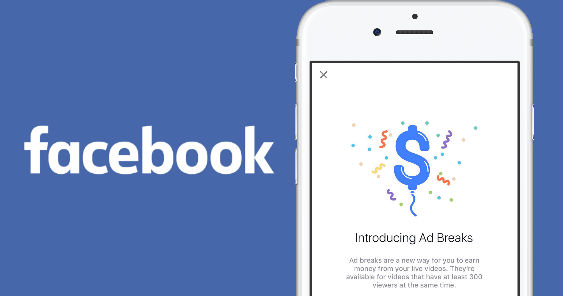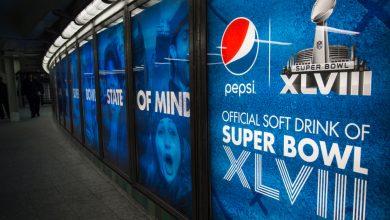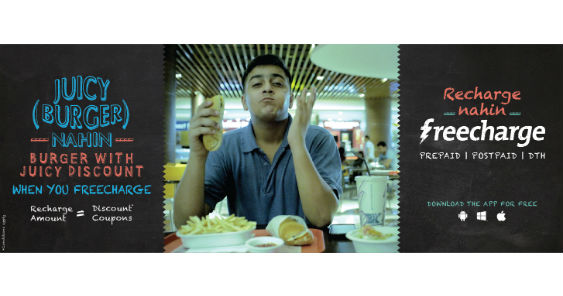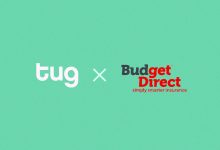DIGITAL – The frictionless video viewing experience is one of the most liberating (and addicting) activities on Facebook. It’s up to the user if they want to turn the sound on or just easily scroll down to skip a video as they please. It has become Facebook’s biggest and most successful feature, naturally making it a viable platform for advertisements.
Facebook is known for tailored and non-intrusive ads. Users have always had the choice to follow brand pages that they genuinely like and hide those that they don’t. Ads and suggested pages programmed according to its users’ interests have only appeared subtly on the lower right side of the newsfeed. There are no annoying pop up or banner ads.
“Mark Zuckerberg built Facebook for the people. It’s not for advertising. It’s for the people. Mark has decided since day one that the advertising on Facebook is not going to hurt the experience that people love in Facebook. Ads should be effective as being part of people’s experience,” said Kitty Lun, Head of Facebook Creative Shop Greater China in an exclusive masterclass organized by adobo magazine in Manila.
But for some of its patrons, the new ad breaks within videos completely contradict what Zuckerberg supposedly wants for the people on Facebook.

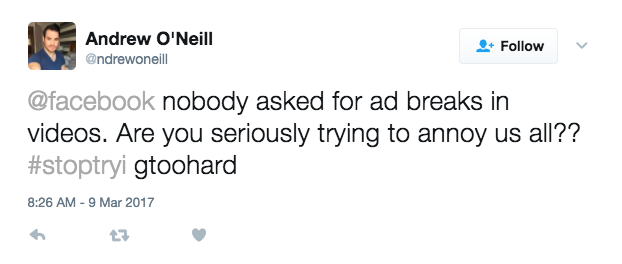
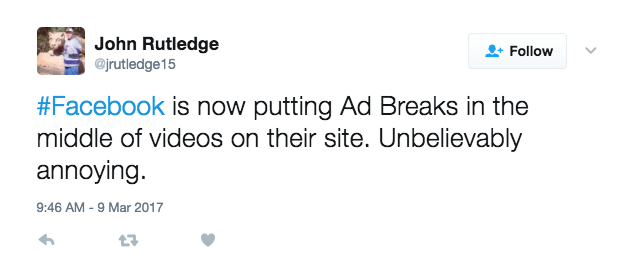
The videos on Facebook are usually 10 to 30-second snackable content suitable to an audience with very short attention span. Inserting 10 to 15-second ads in the middle of cute puppy videos or lightning fast Tasty video cooking tutorials would mean interrupting a viewer who is interested in the content but who is also in a hurry to get it over and done with so they could move on to the next one.
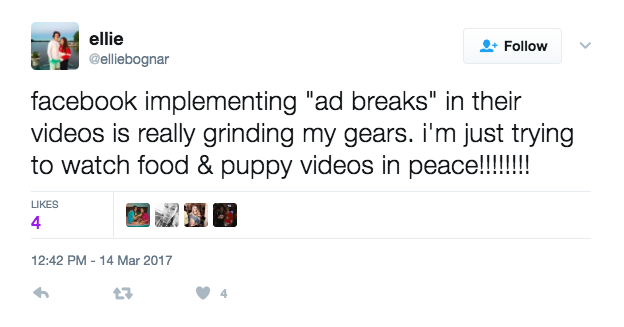
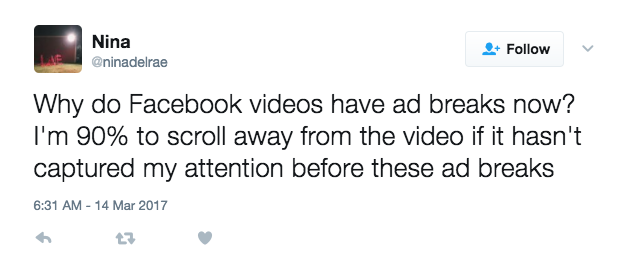
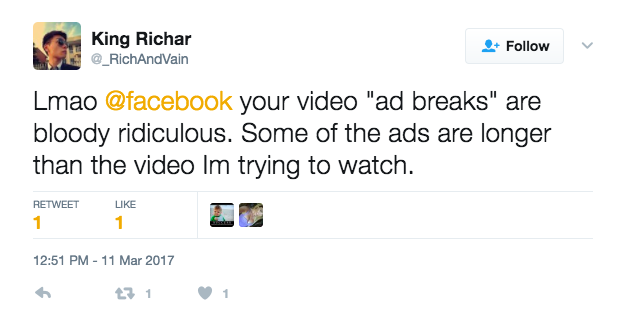
The option to run ad breaks is also available on Facebook livestreams, providing publishers with the means to monetize their content.
“We want to help our partners monetize their premium video content, both on Facebook and on their own websites and apps,” said Brian Boland, VP of Publisher Solutions in a statement.
For publishers, being able to earn from content creation on Facebook like they do on Google and Youtube is a welcome change but for the users who are on the platform to be entertained, this might take a lot of getting used to.

